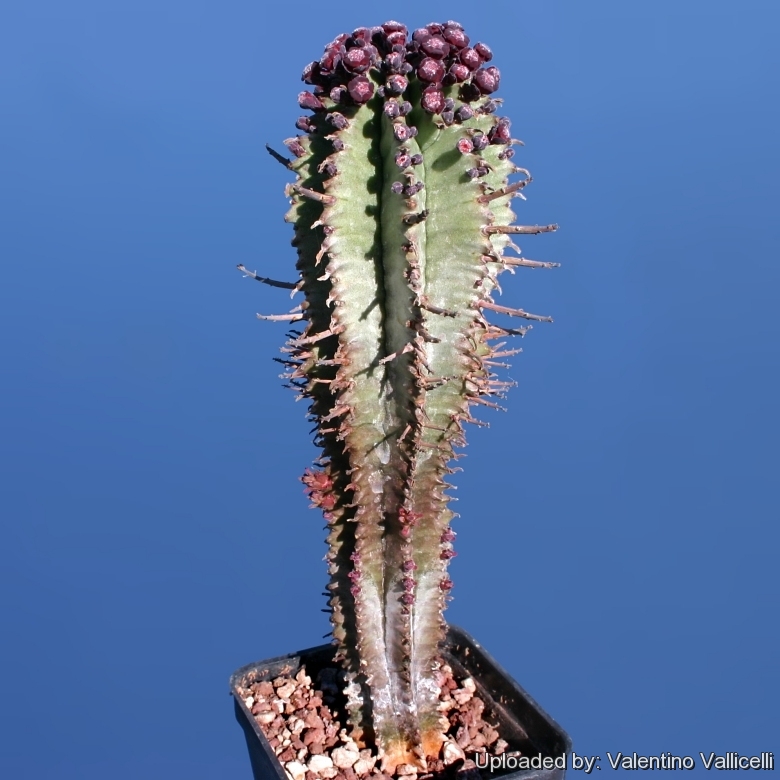
Euphorbia sp. (as submamillaris) Photo by: Valentino Vallicelli
Origin and Habitat: Cultivated plant of unknown origin (Supposed from wild plants found in South Africa, Cape Province)
Synonyms:
Description: This is an Euphorbia of dubious classification, commonly found in cultivation and labelled Euphorbia submammillaris (or submamillaris) which, however, appears to be a quite different plant. Often the names “mammillaris” and “submammillaris” are used indifferently to indicate the same identical plants and also in collection a number of plats called "submammillaris" will surely belongs to other different taxa or are hybrids of uncertain origin. (If you have a more exact classification for this plant, please let us know your comments)
Habit: It is a perennial succulent shrub which may forms clumps of closely packed columns with a few spines. The clumps can be over 50 cm in diameter.
Stems: Cylindrical, about 3-6 cm cm in diameter, 20-40 (or more) cm long, apex hemispherical, pale green, eventually covered by a chalky white bloom, but turning pink near the tops in the cold of winter.
Ribs: 7-10, deeply grooved between with shallow tubercles separated by horrizontal grooves up to 4 mm apart.
Spines (Sterile peduncles): None or few scattered, solitary, 0,4-2 cm long with 3-4 small bracts.
Flowers: Dioecious, deep maroon-purple. Cyathia 5 mm Ø, solitary in clusters near the brances tips, peduncles up to 4 mm long, with 6-6 purplish bract up to 3 mm long.
Blooming season: Winter or spring (depending on growing conditions)
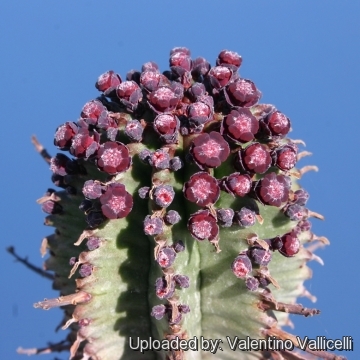 Euphorbia sp. (as submamillaris) Photo by: Valentino Vallicelli
Euphorbia sp. (as submamillaris) Photo by: Valentino Vallicelli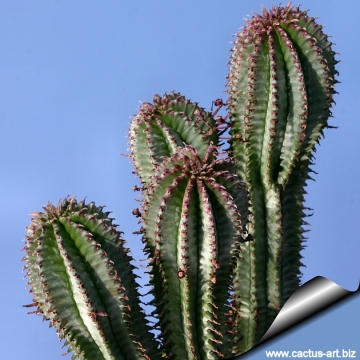 Euphorbia sp. (as submamillaris) Photo by: Cactus Art
Euphorbia sp. (as submamillaris) Photo by: Cactus Art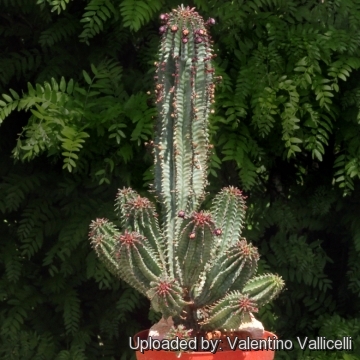 Euphorbia sp. (as submamillaris) Photo by: Valentino Vallicelli
Euphorbia sp. (as submamillaris) Photo by: Valentino Vallicelli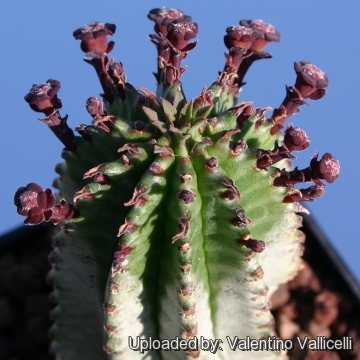 Euphorbia sp. (as submamillaris) Photo by: Valentino Vallicelli
Euphorbia sp. (as submamillaris) Photo by: Valentino Vallicelli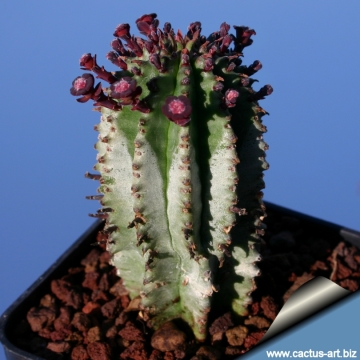 Euphorbia sp. (as submamillaris) Photo by: Cactus Art
Euphorbia sp. (as submamillaris) Photo by: Cactus Art Euphorbia sp. (as submamillaris) Photo by: Cactus Art
Euphorbia sp. (as submamillaris) Photo by: Cactus Art Euphorbia sp. (as submamillaris) Photo by: Cactus Art
Euphorbia sp. (as submamillaris) Photo by: Cactus Art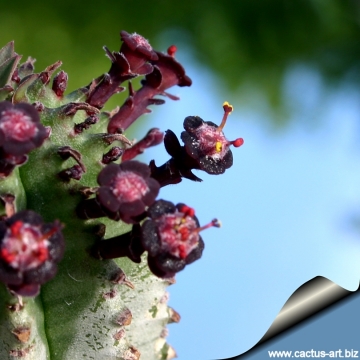 Euphorbia sp. (as submamillaris) Photo by: Cactus Art
Euphorbia sp. (as submamillaris) Photo by: Cactus ArtCultivation and Propagation: An easy-to-grow plant for pot culture. It grows well in a very draining mineral potting substrate, but it isn't picky about soil. It can be watered during the growing season, and enjoys average feeding and watering. When dormant in winter, keep it totally dry at at around 4°C. They need a lot of light to keep their compact growth-form. The plants that are not kept in full sun grow faster, but become untidy and may need support as they get larger. But one gets best colour if grown in full sun, where the chalk white stem of this low-growing clumping columnar plant has the best colour. It is also a prolific flowerer and makes a spectacular specimen.
Propagation: It is propagated by cuttings or seeds. Its branches and offsets are readily available. If you remove an offset, remember to let it dry for a week or so, letting the wound heal (cuttings planted too soon easily rot before they can grow roots). It is better to wash the cut to remove the latex. The seed can be sown just under the surface in normal seedling trays, in a sandy seed mix. Germination usually occurs within 1 - 3 weeks.
Warning: As with all other Euphorbias, when a plant get damaged it exudes a thick white milky sap known as latex. This latex is poisonous and may irritate skin, so pay extreme attention not to get any in your eyes or mouth.
Cultivated plants must be handled carefully.


















